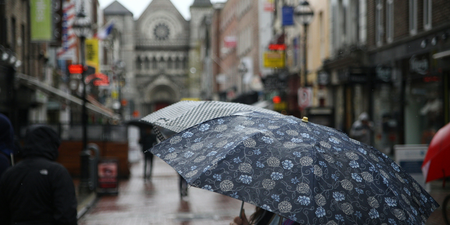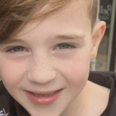Have you watched What Jennifer Did on Netflix yet?
The true crime doc has been doing the rounds on social media since landing on the streaming giant. It tells the story of a young Canadian and her alleged plot to kill her parents.
The film opens with the alarming 2010 emergency call Jennifer Pan placed to the police after her mother was fatally shot and her father critically injured in their family home.
What then unfolds is the harrowing story that police did not initially see coming resulting in the death of her mother Bich Pan and her father Huei Hann Pan becoming blind in one eye.
Over the course of the whole flick, we watch as Jennifer’s lies start to fall apart around her, taking down the facade she had been trying to keep up over the years in the process.
It seemed to start back when she was in high school and included everything from doctoring report cards to faking her high school graduation and even college attendance to nonexistent internships and lies about her relationship status.
When everything was out in the open, it seemed like an open-and-shut case. In 2014, at the age of 28, Pan was found guilty of both the first-degree murder of her mother and the attempted murder of her father.
In January 2015, she was sentenced to life in prison with no parole for 25 years, according to court records obtained by TODAY.com.
Her three co-conspirators, Lenford Crawford, David Mylvaganam and her on-again, off-again boyfriend Daniel Wong, were also found guilty on both charges.
So, why is the case back in the headlines outside of the documentary’s success and why is there a retrial on the horizon?
Why are Jennifer and her co-conspirators possibly heading back to court?

It started in May 2023, when the Ontario Appeal Court ordered a retrial for all four defendants on the first-degree murder charge.
The solicitors argued that the original judge had wrongfully presented just two scenarios for the attack, preventing the jury from considering other verdicts such as second-degree murder or manslaughter.
The court decision read: “In this case, the jury might have had a doubt about the planned and deliberate murder of Pan’s mother but be satisfied that the appellants knew that the murder of Pan’s mother was a probable consequence of a plan to kill her father. This could give rise to a conviction for second-degree murder.
“It was also possible for the jury to have had a doubt about the planned and deliberate murder of Pan’s mother but to have been satisfied that there was a reasonably foreseeable risk of non-trivial bodily harm to Pan’s mother through the implementation of the plan to kill Pan’s father, such that a conviction for manslaughter would arise.”
In other words, the solicitors alleged that by telling the jury to consider one of two paths, Judge Justice R. Cary Boswel prevented the jury from thinking of other scenarios that could have led to the tragedy.
For example, Jennifer had argued as part of her defence that she had tried to hire the hitmen to kill her, not her parents – a third possible scenario that wasn’t presented to the jury.
So in May 2023 a Canadian appellate panel agreed with the defence and pushed for a retrial of the case.
Justice Ian Nordheimer wrote in the panel’s decision: “In my view, this is the most difficult and most consequential error that is put forward.
“If it succeeds, it requires a new trial for all the appellants on the murder charge. I have concluded that it does.”
Yet things aren’t as straightforward as heading to court again because in Canada’s legal system prosecutors also have the right of appeal.
In August 2023 prosecutors for the Pan case filed their own appeal against the appellate ruling with the Canadian Supreme Court.
So now we’re just waiting for the Supreme Court of Canada to decide whether to hear arguments on the appeal.
If they don’t, or if they do but ultimately side with the defence, then the retrial order remains.
All this means that we’ll be waiting on the lower courts to decide whether to bring the case to a retrial.
READ MORE:
- ‘A gift to your future self’ — Everything you need to know about egg freezing
- We adore Kaz Crossley for bravely shaving her head in aid of alopecia charity 2024
- Why can’t we leave Amy Winehouse alone?
- A quarter of women have been pressured to return to work early after health issues
- Can certain foods help reduce PCOS symptoms? Experts weigh in














































